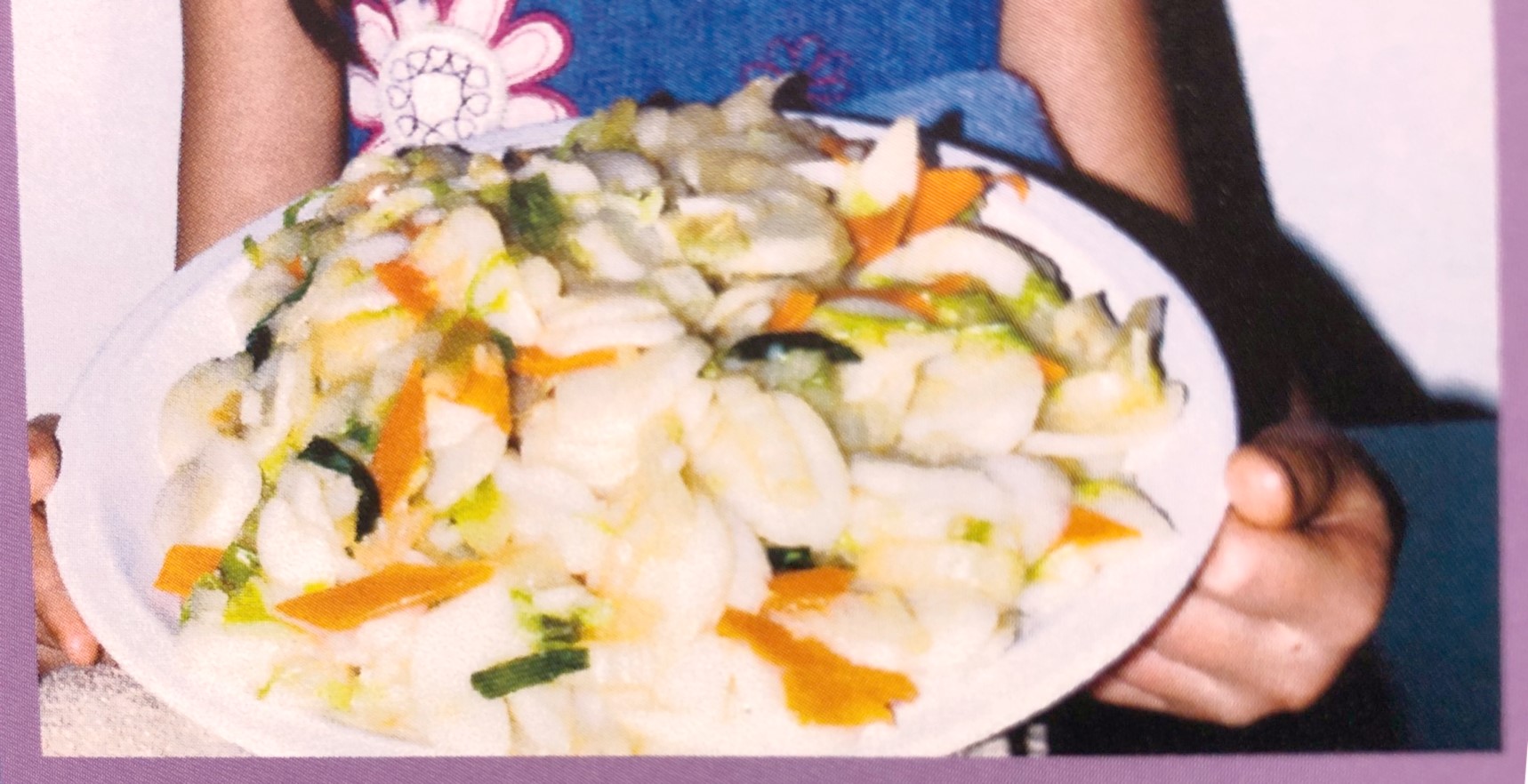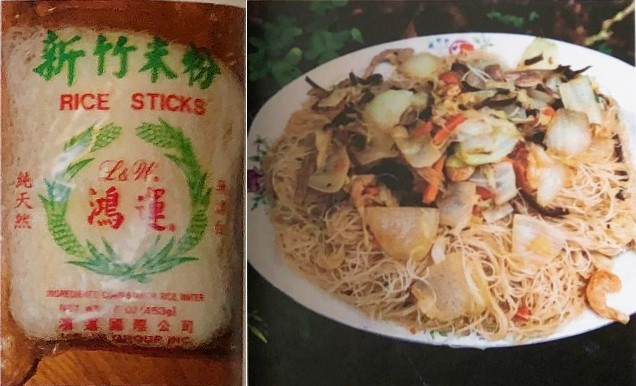
February 14, 2021
3rd Culture Kid’s View of Chinese New Year
Part 4 of AACP's Comfort Food Series
By Sylvia Yeh Kataoka
Reminiscing about my childhood, I can recall my parents saying: “Always be ready to pack your suitcase to travel and follow the path of luck no matter where it takes you.” They adopted this philosophy after they met with a seasoned fortune-teller who prophesied, “Go as far away as possible to become successful.” That is what my parents ingrained in me since I was six. My world was in disarray when I became a 3rd Culture Kid (TCK). A TCK is anyone who has experienced living in three uniquely different countries with contrasting expectations and cultural norms. Even though my father only had a 2nd-grade education, he took a leap of faith, secured a chef’s position in Hyogo, Japan, and left home with a mere $5 in his pocket. At the age of six, I accompanied my mother and brothers to join my father in Japan. I was the 21st generation in Taiwan and now I was leaving behind my grandparents who I hardly saw again.
After living in Japan for six and a half years, I assimilated to Japanese culture by attending their schools where I mastered their language, customs, and cultural expectations. At the same time, I began to lose my cherished Chinese culture and customs. I must admit that I was socially isolated for being “Hakka,” which are a people of SE China. Sadly, Japan traditionally does not celebrate the Chinese New Year. However, our nuclear family still made it a tradition to honor our ancestors and celebrate it. Our dad took us to Chinatown in Kobe, Japan to purchase traditional Chinese herbs and food to create ornate Chinese delicacies. Every year, celebrating this event comforted me because it connected me to my original culture, old friends, and family members that we were separated from.
The next chapter of my life took place when my two older brothers were not allowed to reside in Japan because the government wouldn’t allow males to live in Japan after they turned 16. The government feared that Japanese women might fall in love with them. My parents realized that they would feel like “strangers in a strange land,” if they moved back to Taiwan. Moreover, they would have been forcefully inducted into military service for two years. Since my dad was a Taiwanese military vet, he sensed it would disrupt their lives and career paths. The last option they had was to pray that they could immigrate to the United States.
My soul experienced cross-cultural mobility and paradoxes when my father was blessed by being granted a specialized U.S. work permit as an artisan chef. We traversed the myriad legal and physical rites of passage to immigrate to America; however, our souls experienced a sense of mourning and excitement at the same time. Every child and adult longs to have a sense of belonging to their native homeland where they were born without feeling a burden of guilt for leaving their beloved friends, neighborhoods and loved ones behind. Each year when Chinese New Year is about to happen, my heart is full of joy because I can still visualize my childhood memories of large gatherings, celebrating by eating rice cakes and delectable traditional dishes, playing games, getting vibrant red envelopes, and playing with my friends and cousins.
Now that I am a Third Culture Adult, I am proud of my parents and the formidable sacrifices they made for us. My mother is no longer with us, but I have my beloved children. I hope to instill the precious values and importance of Chinese New Year to them, to pass on to future generations their shared Japanese-Chinese American cultures.
Here are some recipes that I’ve shared with my daughters.

Mr. Yeh's Rice Cake (Chao Nian Gao)
Ingredients
1 bag of rice cake (rice ovaletts)
Medium size Napa cabbage cut 1 inch
¼ lb pork or beef thinly sliced
10 pieces of shiitake mushrooms
1 big carrot cut thin circles
2 green onion cut into inch
15 medium sizes dried shrimps
.
Seasonings:
2 tablespoons Olive oil
4 teaspoons soy sauce
White or black powdered pepper
.
Directions
1. Soak 1 pack of rice cake for 1 hour or until it is soft then drain the water out
2. If you're using dried shiitakes, soak in water until they are soft, then squeeze before slicing
3. Wash dried shrimps twice
4. Heat in wok ½ a tablespoon of olive oil
5. When oil is hot, add pork and cook thoroughly; transfer into a bowl
6. Heat up wok again, add the rest of the olive oil and cook green onion, dried shrimps together first.
7. Add Napa cabbage, carrots, shitake mushrooms together and mix everything with pork. After that put soy sauce and white or black pepper.
8. Add rice cakes and mix.

Hakka Rice Noodles
(Serves 4-6)
Ingredients
2 T (30ml) olive oil or other cooking oil
1 T (15ml) soy sauce
Chinese white pepper powder or black pepper
½ T sesame oil
1 pack Mi Fung (rice stick noodles) 16 oz (453g)
½ bunch of green onions, chopped or sliced
1 large onion, chopped
¼ lb of pork, thin sliced
7 pieces of shiitake mushroom
1 medium size Napa cabbage or cabbage, thinly sliced
15 pieces of medium dried shrimps
1 large carrot, shredded, about 2 inches
.
Directions
1. Soak 1 pack Rice Stick Noodles in the water for 1 hour, drain the water and cut noodles short.
2. If you're using dried shiitakes, soak in water until they are soft, then squeeze before slicing
3. Soak the dried shrimps for 10-20 minutes and wash them with cold water 2 times.
4. Heat up wok, add olive oil.
5. When oil is hot, add pork and cook thoroughly.
6. Now add dry shrimp and ½ T of the soy sauce
7. Add all the vegetables (green onions, onion, cabbage, carrots, and Shitake mushroom) and cook with the pork and dry shrimp mixture.
8. Add white pepper powder, and the rest of the soy sauce and mix.
9. Add Mi Fung and mix.
10. Mix everything together until noodles are evenly brown with soy sauce. Add the sesame oil (room temperature) to the noodles and work through.
.
Note: put soy sauce and white powder pepper before adding Rice Stick Noodles so that the noodles won’t taste sour
Copyright © 2021 by AACP, Inc.